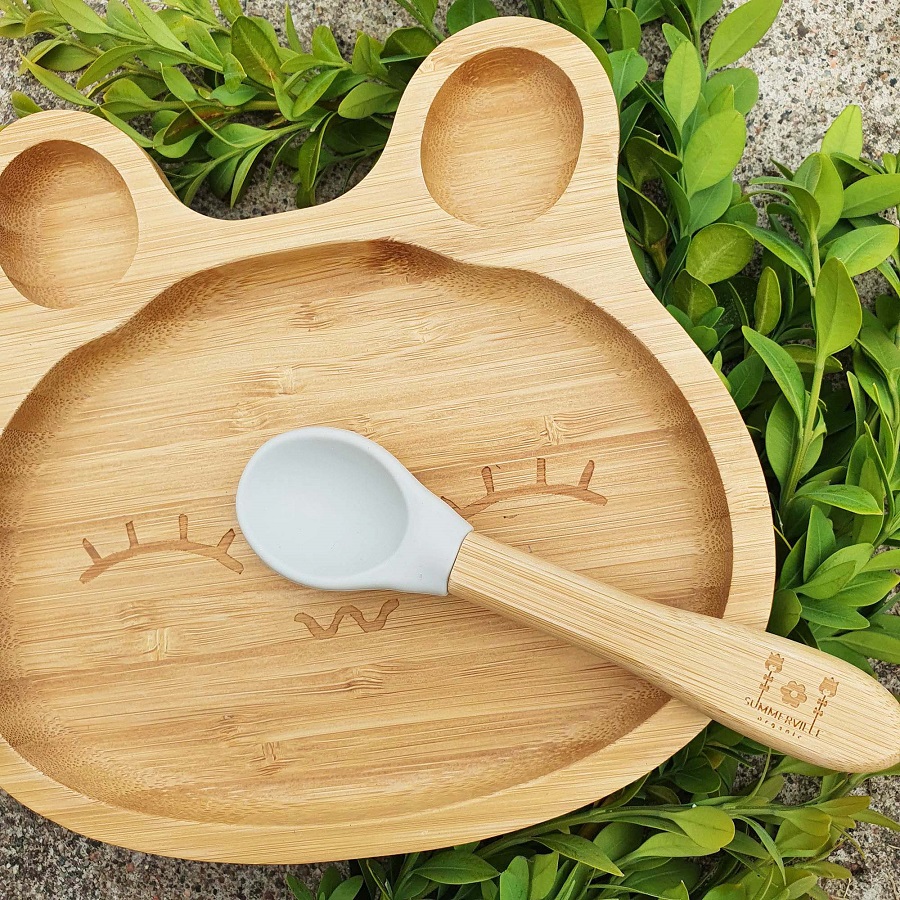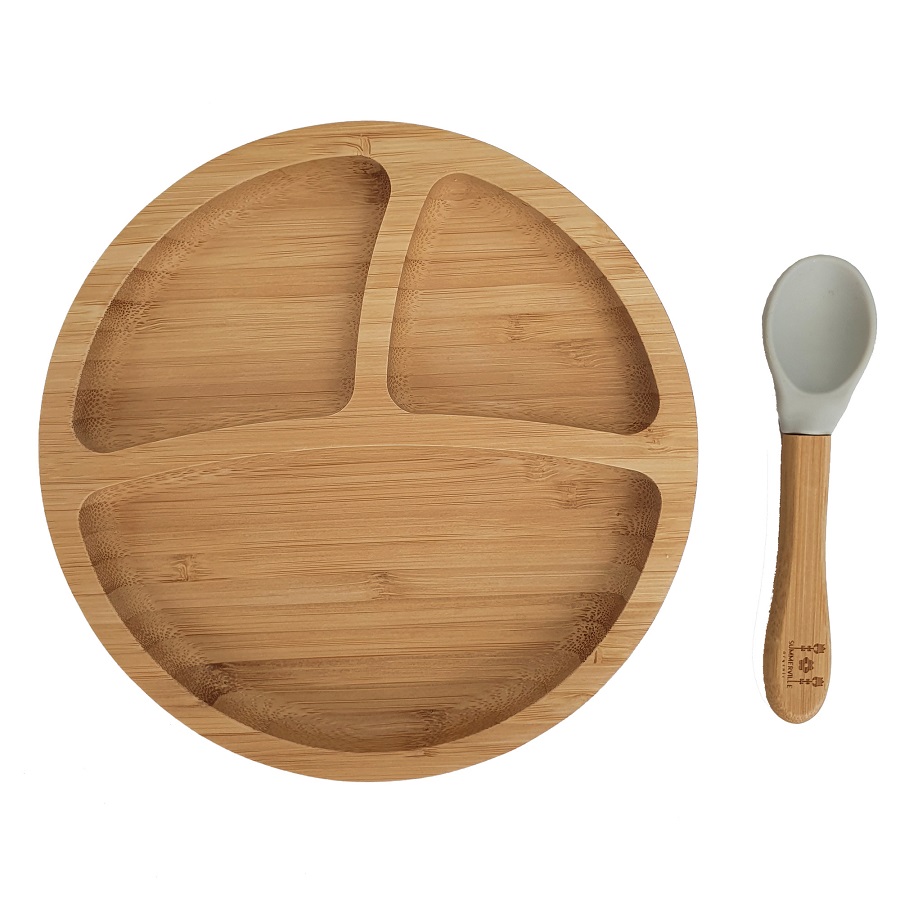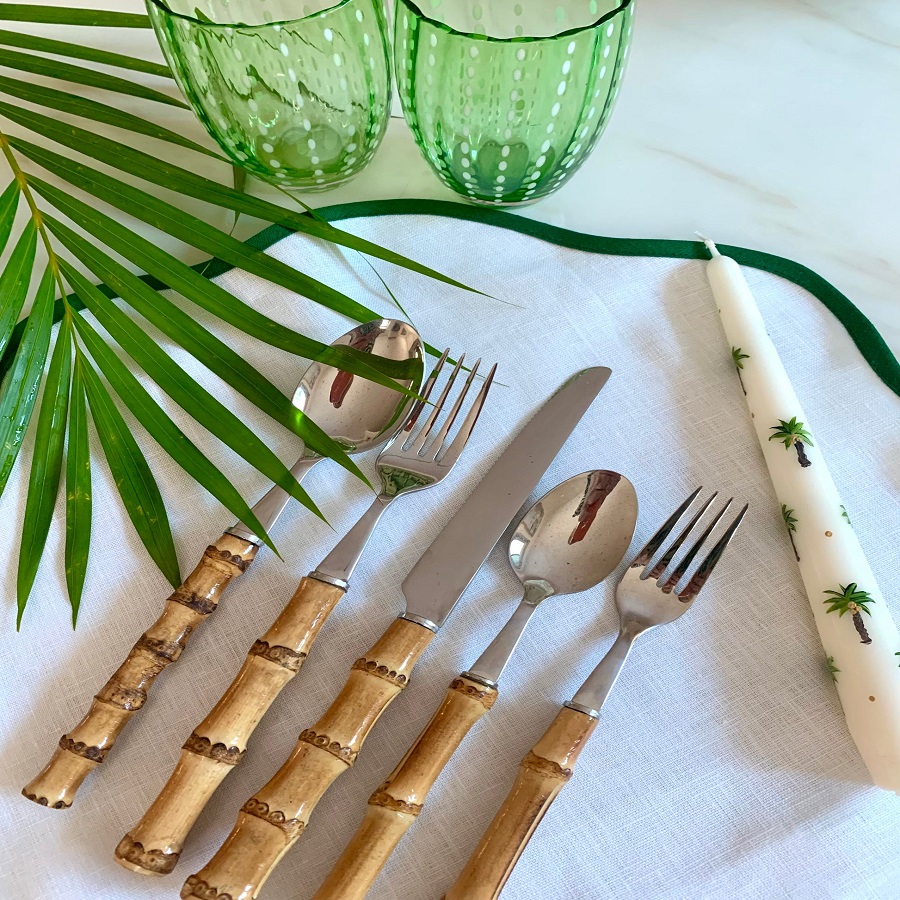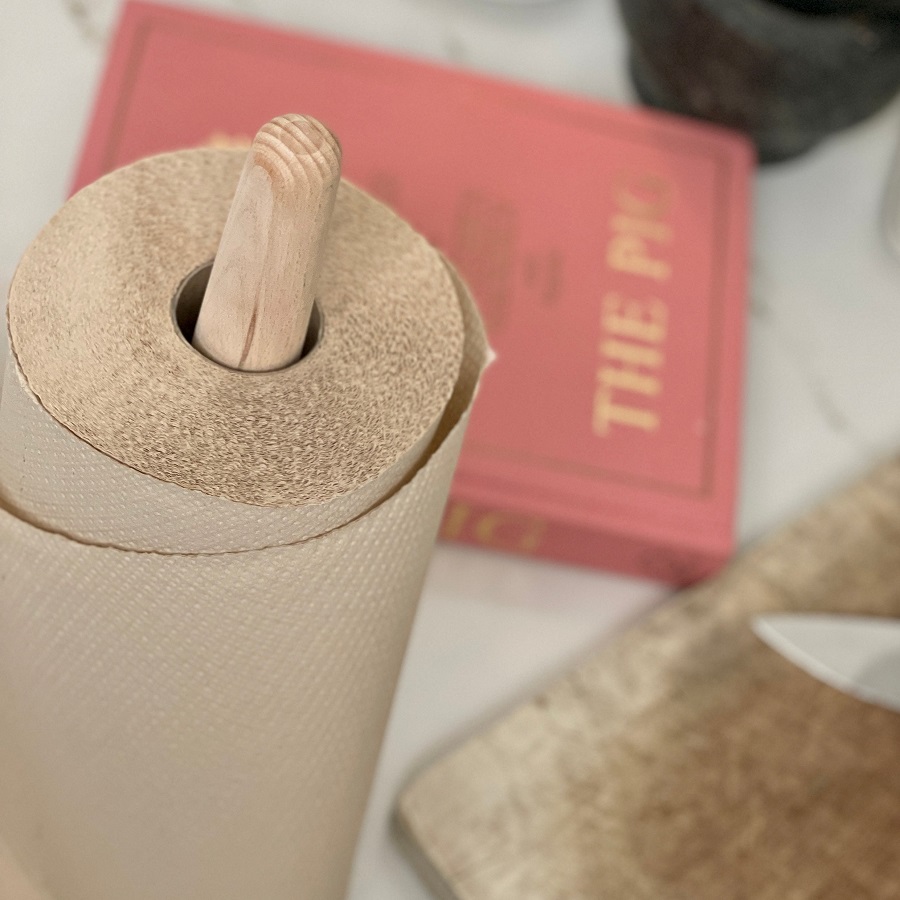Eco-friendly Benefits of Bamboo Tableware
Choosing bamboo plates and cutlery isn’t just a stylish choice, it’s a step towards a cleaner earth. These eco-friendly dining options have gained popularity due to their significant environmental advantages.
First off, bamboo is a highly renewable resource. It grows quickly, much faster than trees, which means it can be harvested more often without causing harm. This rapid growth rate reduces the need to clear forests, preserving crucial habitats for wildlife.
Moreover, bamboo tableware is fully biodegradable. Unlike plastic options that can linger in the environment for hundreds of years, bamboo will break down naturally once discarded. This means less waste in our landfills and oceans. And when we say biodegradable, we mean it — bamboo can decompose in as little as a few months under the right conditions.
Bamboo plates and cutlery are also free from harmful chemicals. Often, plastic items contain BPA or other toxins that can leach into food and cause health risks. With bamboo, there’s no need to worry about hazardous substances sneaking into your meal. This makes them a safer option for your family, especially for children’s use.
Lastly, the production of bamboo tableware requires less energy compared to its plastic counterparts. Lower energy consumption means a reduced carbon footprint, making bamboo an even greener choice.
In the world of sustainable dining, bamboo plates and cutlery stand out for their positive impact on the planet. They offer a practical and environmentally friendly alternative to traditional dining ware, without sacrificing quality or appeal.
 The Durability and Longevity of Bamboo Products
The Durability and Longevity of Bamboo Products
Bamboo plates and cutlery are not only eco-friendly but also remarkably durable. Their strength and resistance to wear and tear is comparable to many hardwoods. This durability stems from the natural properties of bamboo fibers, which are tightly woven and provide robustness. Unlike traditional materials that may chip or break easily, bamboo withstands daily use with grace.
A notable aspect of bamboo products is their longevity. With proper care, bamboo tableware can last for years. They resist staining and do not absorb odors, maintaining their fresh look and feel over time. The material’s natural resistance to moisture helps prevent the growth of mildew and bacteria, further extending the life of these products.
Bamboo plates and cutlery do not warp or lose shape even with regular exposure to liquids or heat. This aspect is especially advantageous for items frequently used for serving hot meals or beverages. Moreover, when the time comes to replace them, bamboo products will biodegrade without leaving harmful residues behind, continuing their lifecycle in an eco-friendly manner.
In sum, bamboo tableware is a smart choice for the long haul. Its combination of durability and sustainability sets it apart from conventional options. By choosing bamboo, consumers not only contribute to a greener planet but also enjoy products that can stand the test of time.
Comparing Bamboo with Traditional Plastic and Paper Tableware
When it comes to dining, the materials we choose can have a big impact. Let’s compare bamboo with plastic and paper tableware.
Traditional plastic tableware is cheap and easily available. But they pose environmental issues. Plastics can take centuries to break down. They add to the growing problem of landfill waste and ocean pollution.
Bamboo plates and cutlery, on the other hand, offer a green solution. They decompose much faster than plastic. This reduces their environmental footprint significantly.
Paper tableware may seem like a better option than plastic. Yet, they often have a plastic lining. This makes them non-biodegradable. Paper also requires cutting down trees, which impacts forests and wildlife.
Bamboo is a more sustainable choice here as well. It grows quickly and doesn’t need pesticides or much water. It’s a resource that’s kind to the earth.
When we compare longevity, bamboo outshines paper and plastic. Bamboo products are sturdy and can last for years. Plastic and paper tableware are often used once and thrown away. This means more waste and higher costs over time.
In terms of health, bamboo is the safer bet. It doesn’t contain harmful chemicals like BPA found in plastics. With bamboo, your food stays free from toxins.
To summarize, cutlery beat traditional plastic and paper options. They are eco-friendly, durable, and safe for your family. By choosing bamboo, we opt for a healthier planet and a greener future.
Aesthetics and Versatility of Bamboo Plates & Cutlery for Different Occasions
Bamboo plates and cutlery don’t just serve sustainability; they bring elegance to any table. These pieces come in natural hues, fit for a variety of settings. Be it a casual brunch or a formal dinner, bamboo tableware makes the right statement.
Event planners often pick bamboo for its rustic and organic look. It adds a touch of nature to weddings and garden parties. The neutral tone complements any color scheme, blending seamlessly with different decor styles.
For everyday dining, bamboo’s simplicity is key. It matches well with any kitchen design, from modern to country-style. Families appreciate its warm, inviting appearance. It elevates the daily meal experience.
Bamboo is also great for themed events. Imagine a tropical luau or a Zen-inspired gathering; bamboo fits perfectly. It’s versatile enough to adapt to specific themes, enhancing the overall ambiance.
Beyond aesthetics, bamboo tableware is practical. It’s light to handle and stackable, saving space. This makes it ideal for picnics, outdoor trips, and small kitchens.
Restaurants and cafes are turning to bamboo too. It gives a unique flair to the dining experience. Customers often look for eco-friendly options, and bamboo delivers. It sets an establishment apart, signaling a commitment to the environment.
In summary, bamboo plates and cutlery offer beauty and functionality. They suit a wide range of occasions and settings. Choosing bamboo is choosing style, comfort, and sustainability. It’s a small decision with a lasting impact on our dining and our planet.
How Bamboo Production Positively Impacts the Environment
The way we make cutlery also helps our planet. Growing bamboo is good for the soil. It prevents erosion and keeps the soil stable. Plus, bamboo plants release more oxygen and take in more carbon dioxide than many trees. This helps fight climate change.
Bamboo farming uses fewer chemicals than other crops. It doesn’t need pesticides or fertilizers to grow well. This makes the soil and water around bamboo farms cleaner. Local wildlife benefits from this clean environment too.
Also, bamboo absorbs heavy metals from the soil. This helps reduce pollution and keeps the soil healthy for other plants. Farmers can grow bamboo in places that need healing, like overused or damaged land. Growing bamboo can fix the land and make it better.
Another plus is that bamboo needs very little water. This saves water resources and helps in areas that don’t have much rain.
Bamboo production creates jobs in farming and crafting. This can help local communities make money and build better lives. It’s a way to support people and take care of nature at the same time.
To sum up, making and choosing bamboo dining products does a lot of good. It helps preserve our environment and supports local economies. Bamboo is more than just a material; it’s a choice for a better world.
Care and Maintenance Tips for Bamboo Plates & Cutlery
Bamboo tableware is sturdy and long-lasting with the right care. Here are some simple tips to maintain your bamboo plates and cutlery:
- Wash by Hand: Bamboo doesn’t like dishwashers. The heat and water can cause cracking. Always hand wash with warm, soapy water. Use a soft sponge to avoid scratches.
- Quick Drying: After washing, dry your bamboo products immediately. Use a clean towel or let them air-dry. This stops water marks and keeps mold away.
- Keep Dry: Store bamboo in a dry place away from moisture. This helps prevent warping and maintains their shape.
- Oil Regularly: Rub bamboo with mineral oil once a month. This protects the wood, keeps it looking fresh, and prolongs its life.
- Avoid Prolonged Soaking: Don’t leave bamboo soaking in water. Submerged bamboo can split or swell.
- Do Not Microwave: Bamboo plates and cutlery should not go in the microwave. Heat can harm them. Always transfer food to a heat-safe dish before microwaving.
- Sharp Tools Aware: Use bamboo or wood cutting tools. Metal knives can leave cuts that harbor bacteria in the bamboo.
By following these care instructions, your bamboo plates and cutlery will stay in excellent condition. This ensures that you enjoy your sustainable tableware for years. Moreover, it keeps waste low by reducing the need for replacements. Remember, little actions can have a big impact on our planet.
Where to Find Quality Bamboo Dining Products
When seeking out bamboo plates and cutlery, it’s critical to find products of high quality. Here are places and tips to consider:
- Specialty Eco-Stores: These shops focus on eco-friendly products, including durable bamboo tableware.
- Online Marketplaces: Websites like Amazon and Etsy have a wide range of bamboo dining items from various sellers.
- Craft Fairs and Local Markets: Artisans often sell handmade bamboo tableware, offering unique designs.
- Home Goods Stores: Many stores now carry eco-friendly lines that include bamboo products.
- Direct from Manufacturers: Buying directly can often ensure the best quality and support sustainable practices.
It’s important to look for indicators of quality when purchasing bamboo dining wares. Choose items with smooth finishes, no cracks or splinters, and consistent coloring. Check for reviews or certifications that can vouch for the product’s sustainability and safety, such as BPA-free or food-grade certifications.
By choosing high-quality bamboo plates and cutlery, not only do you get durable and aesthetically pleasing products, but you also contribute to a healthier environment. As you shop, keep in mind the eco-friendly and sustainable spirit that guides the choice for bamboo, ensuring your purchase aligns with these values.
The Future of Dining: Trends in Sustainable Tableware
The dining industry is evolving with a clear trend towards sustainability. Bamboo plates and cutlery are at the forefront of this movement. Aware consumers are pushing for eco-friendly materials in their dining experiences. Bamboo has become a symbol of this change. Its eco-friendly benefits, such as rapid biodegradability and minimal chemical use, set the standard for future tableware.
We are seeing more restaurants and caterers choosing bamboo over conventional materials. Its appeal lies in both its practicality and environmental impact. The trend is growing as consumers become more environmental. They want dining options that don’t harm the planet.
The demand for sustainable dining is driving innovation. New methods to make bamboo products even greener are emerging. Companies are finding ways to reduce waste in production. They are also improving the durability of bamboo products. This minimizes the need for frequent replacements and further reduces environmental impact.
Another emerging trend is the incorporation of bamboo in disposable tableware. Ideal for events and takeaways, these products combine convenience with sustainability. They break down quickly after use, unlike plastics. This helps cut down the amount of waste reaching landfills and oceans.
Looking forward, we can expect to see bamboo make its way into more dining places. Companies are likely to develop new forms and uses for bamboo in the tableware industry. Bamboo’s role in sustainable dining is bound to grow. It serves as a guide for future materials that aim to be kind to our earth.
By staying informed about sustainability trends, we can make better choices for our planet. Choosing bamboo plates and cutlery is one simple but powerful way to contribute to these evolving trends in dining.



